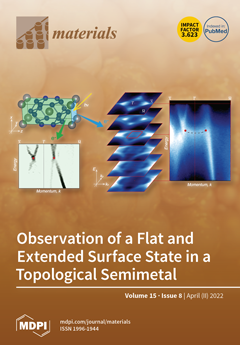In this study, sodium methylsilicate and lime were selected to prepare the same proportion of Imitation Site Soil, and according to the principle of carbonation reaction of restoration materials, the effect of carbonation reaction on the performance of restoration soil of earthen sites
[...] Read more.
In this study, sodium methylsilicate and lime were selected to prepare the same proportion of Imitation Site Soil, and according to the principle of carbonation reaction of restoration materials, the effect of carbonation reaction on the performance of restoration soil of earthen sites was studied. The study has good significance for the conservation and restoration of earthen sites. The samples were cured with CO
2 concentration and curing age as variables. After curing, the samples were tested to determine their water-resistant properties, uniaxial compressive strength, and pH value and a micro scanning electron microscope was used. The results indicated that the carbonation reaction can quickly improve the water resistance and compressive strength of imitation site soil, and reduced the water absorption by 16.67% compared to the specimens conditioned at 0.03% CO
2 concentration. The UCS of specimens at 5%, 10%, and 15% CO
2 concentrations increased by 72.22%, 131.19%, and 219.27%, respectively, compared with those at 0.03% CO
2 concentration after the specimens were environmentally maintained in the carbonation chamber at 0.03%, 5%, 10%, and 15% CO
2 concentrations for 120 h, respectively. The internal particle gradation of the imitation site soil improved after carbonation. These results provide a basis for improving the restoration technology of earthen sites.
Full article






